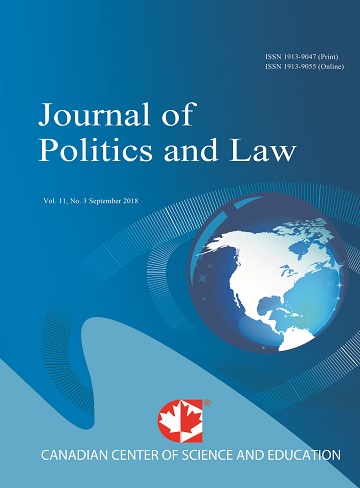Designing a Constitutional Presidential Democracy in Indonesia
- Saldi Isra
- Fahmi Idris
- Hilaire Tegnan
Abstract
The constitutional design of the Indonesian democracy has undergone several significant changes from President Sukarno’s regime known as Orde Lama or the Old Order (1945-1965) to Era Reformasi or Reformation Era (1998 to present). During the drafting of the 1945 Constitution, the desire to form a democratic system of government that is unique to Indonesia has led its founding fathers to adopt an ambivalent system of government resembling both a parliamentary and presidential systems of government. By investigating the Indonesian democracy and system of government through the analysis of relevant articles of the 1945 Constitution, the present study seeks to address the question how to design a constitutional presidential democracy in Indonesia. The research results show that with the election of president and vice president and their accountability to the People’s Consultative Assembly or Majelis Perwalikan Rakyat (MPR), the design of the Indonesian system of government better fits a parliamentary more than a presidential. However, the four amendments to the 1945 Constitution (from 1999 to 2002) were intended to pave the way for a presidential democracy capable of accommodating the characteristics of a true presidential system of government in Indonesia.
- Full Text:
 PDF
PDF
- DOI:10.5539/jpl.v13n2p22
Journal Metrics
h-index (2017): 14
i10-index (2017): 39
h5-index (2017): 9
h5-median (2017): 11
Index
- Academic Journals Database
- ACNP
- ANVUR (Italian National Agency for the Evaluation of Universities and Research Institutes)
- Berkeley Library
- CNKI Scholar
- COPAC
- CrossRef
- DTU Library
- EBSCOhost
- Elektronische Zeitschriftenbibliothek (EZB)
- EuroPub Database
- Excellence in Research for Australia (ERA)
- Genamics JournalSeek
- GETIT@YALE (Yale University Library)
- Ghent University Library
- Google Scholar
- Harvard Library
- HeinOnline
- INDEX ISLAMICUS
- Infotrieve
- Jisc Library Hub Discover
- JournalGuide
- JournalTOCs
- LOCKSS
- MIAR
- Mir@bel
- NewJour
- Norwegian Centre for Research Data (NSD)
- Open J-Gate
- PKP Open Archives Harvester
- Publons
- Pubmed journal list
- RePEc
- ROAD
- Scilit
- SHERPA/RoMEO
- Standard Periodical Directory
- Stanford Libraries
- UCR Library
- Ulrich's
- UniCat
- Universe Digital Library
- UoS Library
- WorldCat
- Zeitschriften Daten Bank (ZDB)
Contact
- William TaiEditorial Assistant
- jpl@ccsenet.org
